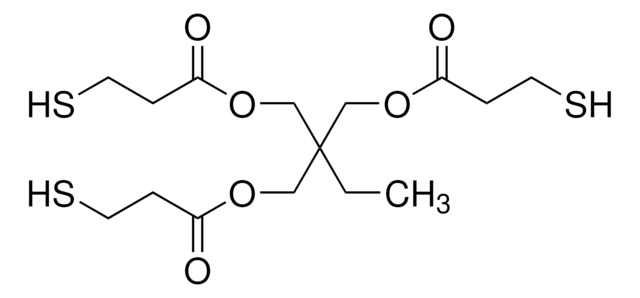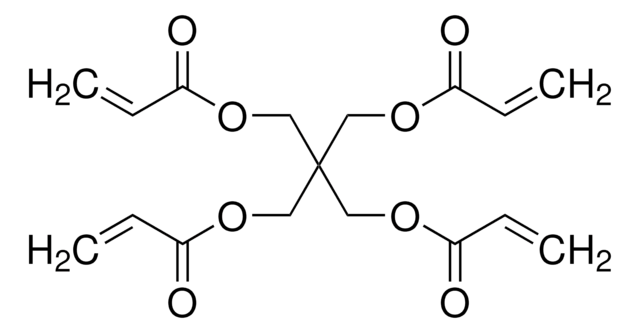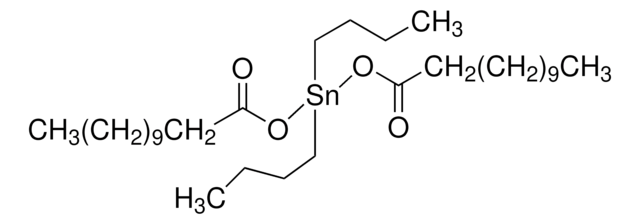381462
Pentaerythritol tetrakis(3-mercaptopropionate)
>95%
Synonym(s):
Pentaerythritol (3-mercaptopropionate), Pentaerythritol terakis(3-mercaptopropionate), Pentaerythritol tetra(3-mercaptopropionate)
About This Item
Recommended Products
Quality Level
Assay
>95%
refractive index
n20/D 1.531 (lit.)
bp
275 °C/1 mmHg (lit.)
density
1.28 g/mL at 25 °C (lit.)
SMILES string
SCCC(=O)OCC(COC(=O)CCS)(COC(=O)CCS)COC(=O)CCS
InChI
1S/C17H28O8S4/c18-13(1-5-26)22-9-17(10-23-14(19)2-6-27,11-24-15(20)3-7-28)12-25-16(21)4-8-29/h26-29H,1-12H2
InChI key
JOBBTVPTPXRUBP-UHFFFAOYSA-N
Looking for similar products? Visit Product Comparison Guide
Application
- Polymeric degradable networks through thiol-ene click reactions with tri/tetra-acrylates.
- Thiol-ene-methacrylate composites, which are applicable as dental restorative materials.
- Network solid polymer electrolytes based on polydimethylsiloxane, for lithium-ion batteries.
Signal Word
Warning
Hazard Statements
Precautionary Statements
Hazard Classifications
Acute Tox. 4 Oral - Aquatic Acute 1 - Aquatic Chronic 1 - Skin Sens. 1
Storage Class Code
10 - Combustible liquids
WGK
WGK 3
Flash Point(F)
Not applicable
Flash Point(C)
Not applicable
Personal Protective Equipment
Choose from one of the most recent versions:
Already Own This Product?
Find documentation for the products that you have recently purchased in the Document Library.
Customers Also Viewed
Articles
The Progress in Development of Dental Restorative Materials
Our team of scientists has experience in all areas of research including Life Science, Material Science, Chemical Synthesis, Chromatography, Analytical and many others.
Contact Technical Service
















